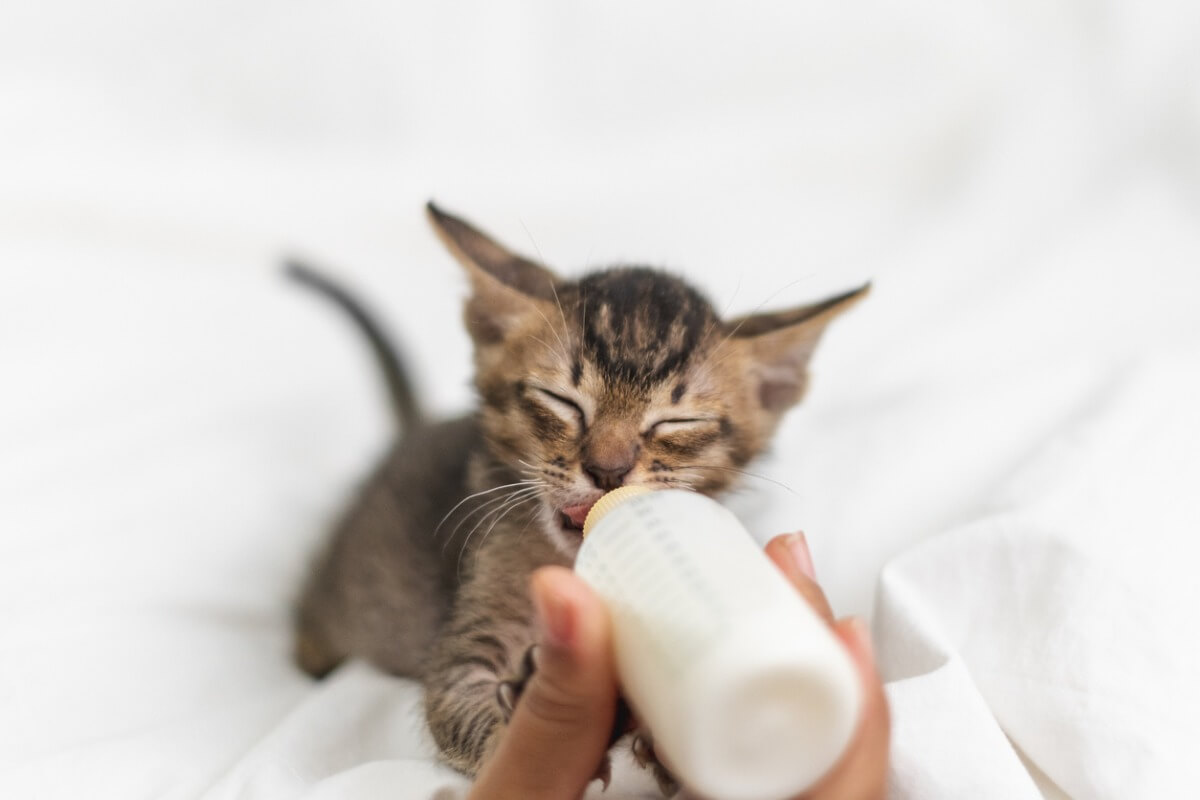Deworming Cats: When Is It Appropriate?

Many people who adopt a cat find themselves with questions they hadn’t foreseen when their animal first arrived at their home, especially if they’re first-time owners. Deworming cats is one of those issues, as it isn’t only a matter of giving the cat a pill, but also of taking into account factors such as the age of the animal or if it normally goes outdoors.
That’s why in this post you’ll be able to find advice adapted to all types of cats. If you’re concerned about this issue, you’re right to want to get to know more, because giving your cat the correct treatment will save you a lot of trouble in the future. Let’s go!
What can you prevent with deworming?

First of all, and although it may seem obvious, it’s important to know what exactly you’re preventing when you deworm cats. Cats can be hosts to a wide variety of parasites, which are classified into two main groups: external and internal. We’ll explain it in more detail now:
External parasites
Also called ectoparasites, they lodge on the outside of the animal’s body, which means that they never cross the skin barrier or travel through the bloodstream. They usually lodge in the cat’s fur.
Some examples of these parasites are fleas, ticks, lice and mites.
Internal parasites
Internal parasites or endoparasites, unlike the previous ones, lodge inside the animal’s body. The cat becomes infested by introducing the parasites into its body through the ingestion of insects, contaminated food, or waste from other animals, or through the bite of hematophagous invertebrates.
The most common examples of endoparasites are protozoa, tapeworms or filaria.
What should I take into account when deworming domestic cats?
The frequency and deworming measures you should take with your cat depend largely on where you live, the age of the animal, and the methods you want to use. To give you an idea, the frequency can vary from once every 3 months to having to do it on a monthly basis. Below are guidelines for all these frequencies.
Age of cat
Puppies and adults need different deworming treatments to ensure prevention of these problems. Here are the general guidelines:
- Kittens: Kittens under 3 months of age require a first internal deworming at one month to eliminate the possible parasitic load of the mother. After that, a new dose will be administered every 15 days until the kitten is 3 months old.
- Cats from 3 to 6 months old: During this period, monthly deworming is performed until the cat is 6 months old.
- Cats from 6 months of age: At this time the animal’s lifestyle is studied to establish a definitive frequency of deworming.
- Pregnant or lactating cats: In these cases it’s advisable to deworm the mother so that she doesn’t transmit any infestation to the offspring, but it must be done with specific medication for pregnant cats.

Lifestyle
Felines with access to the outdoors should be dewormed more often, possibly once a month. Keep in mind that they’re in contact with many more pathogens and parasites when they go outside, and so they need a higher frequency of deworming and strict vaccination.
Also, when a cat goes out and this aspect of its health isn’t taken care of, it’s a contagion vector for all the other animals it crosses paths with and lives with, including humans.
Geographical location and climate
The area where you live with your cat is also relevant. In places with a warm and humid climate, for example, there will be more insects, and so the incidence of parasitic diseases related to these vectors will be higher.
On the other hand, certain parasites are endemic to specific places or more common in certain locations. The parasites of the genus Leishmania, for example, predominate in tropical and subtropical areas, as they’re transmitted through the bite of the sandfly.
Most frequent methods for deworming cats
Fortunately, the range of antiparasitic products on the market is wide and adapts to all types of cats. They cater for those that can’t swallow pills, those that go out in the street, those that cannot stand being caught etc. Let’s see the most common methods.
Pipettes
This is a liquid treatment for external parasites in a single-dose format. It’s applied directly on the cat’s skin, usually on the nape of the neck so that they can’t lick it off. Although it’s applied in a certain area, the active ingredient is distributed through the organism subcutaneously, creating a protective barrier against insects.
The approximate duration of effectiveness of the pipettes is one month.
Anti-parasite collars
These are also used for external parasites, and they’re ideal for cats that live outdoors or have access to it. Their effect is continuous over time, but there are certain disadvantages to take into account. Most of them lose effectiveness when they get wet and, if they don’t fit well around the cat’s neck, there’s a risk of them getting caught and trapped without being able to remove the collar.
Hygiene and cleaning products
These chemicals are marketed as shampoos and household cleaning products. While they aren’t a prevention method per se, they are a great help when the cat suffers an infestation. They usually eliminate both adults and eggs and stop the infestation from advancing into the cat’s home and affecting other animals.
Antiparasitic drugs
Drugs such as fenbendazole, pyrantel, praziquantel or milbemycin are necessary to deworm cats internally. Depending on the factors indicated in previous sections, the recommended frequency varies between 2 and 6 months.
These drugs work by killing the parasite, so that the cat expels them through feces or urine.
As you can see, the ideal time to deworm a cat varies from one specimen to another. Before choosing a product for your cat, go to see your vet. They’ll give you personalized guidelines for your particular situation, and you’ll be able to keep your feline safe from these unwanted guests.
All cited sources were thoroughly reviewed by our team to ensure their quality, reliability, currency, and validity. The bibliography of this article was considered reliable and of academic or scientific accuracy.
- GEMFE : desparasitación interna del gato. (s. f.). AVEPA. Recuperado 1 de febrero de 2022, de https://www.avepa.org/articulos/desparasitacion_interna.html#:%7E:text=Las%20recomendaciones%20son%20desparasitar%20cada,eficaz%20contra%20los%20gusanos%20redondos.&text=El%20tratamiento%20se%20recomienda%20en,para%20gusanos%20planos%20y%20redondos
- Arias, J. R., Freitas, R. A. D., Naiff, R. D., & Barrett, T. V. (1987). Observaciones sobe el parasito leishmania mexicana amazonensis y la infecion natural que provoca en el flebotomo lutzomyia olmeca nociva. Boletín de la Oficina Sanitaria Panamericana (OSP); 103 (3), sept. 1987.
- Svobodová, M., Alten, B., Zídková, L., Dvořák, V., Hlavačková, J., Myšková, J., … & Volf, P. (2009). Cutaneous leishmaniasis caused by Leishmania infantum transmitted by Phlebotomus tobbi. International journal for parasitology, 39(2), 251-256.